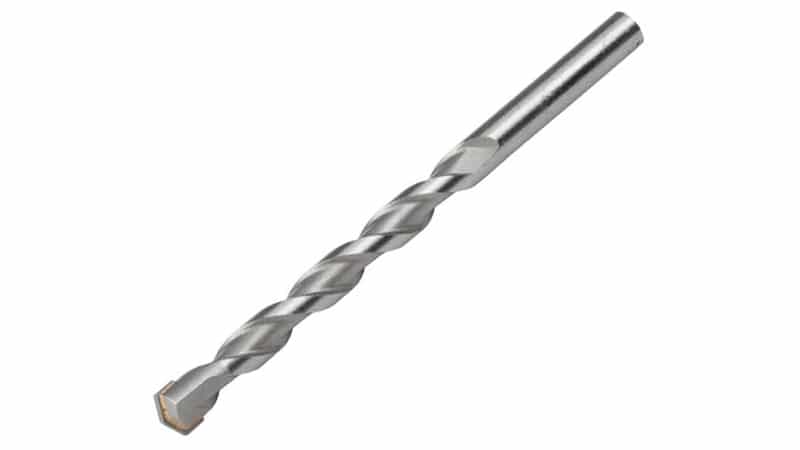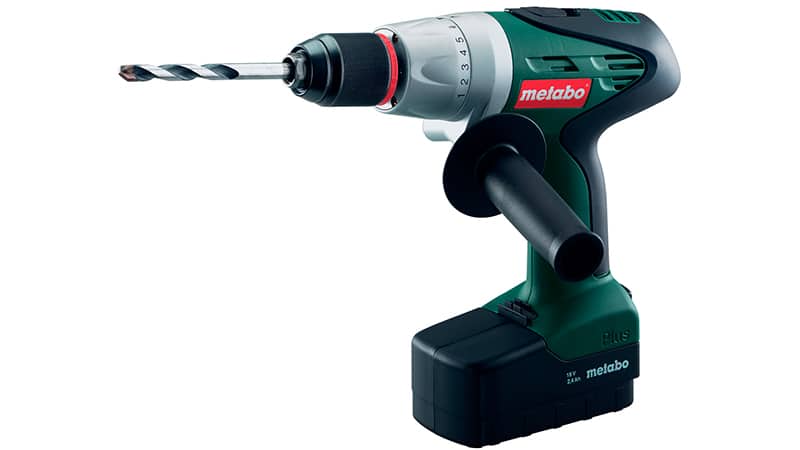Ceramic tiles are versatile wall and floor finishes with many benefits. It is widely used in rooms with high levels of humidity and pollution. In residential buildings, it is almost always used in the bathroom and in the kitchen (at least in the work area). This is due to its moisture resistance, unpretentious maintenance and the ability to wash its surface even with chemical agents. In addition, it is durable and very strong, it can withstand heavy and prolonged loads and at the same time not lose its original appearance.
When decorating walls with tiles, one way or another, it becomes necessary to drill holes in it for connecting communications (pipes, electrical outlets) or for fixing shelves, cabinets, lamps, heated towel rails, hooks, etc. on the walls. This is where the problem arises, because the tile itself is quite fragile, so you need to drill it carefully and only with special drills, otherwise you will have to spend money on buying additional split tiles or change the finish locally in places where it is damaged. How correctly, what drill and how to drill a tile, and will be discussed further.
To drill the tile, you can use an electric or hand drill, a cordless or cordless screwdriver. The minimum rotation speed is selected - up to 1000 revolutions, and the tool itself is selected depending on the required hole diameter.
How to drill a tile so that it doesn't crack? There are several universal secrets that professionals use:
- drill a hole at a distance of more than 15 mm from the edge, which will reduce the risk of cracks and chips, the closer to the edge, the higher the likelihood of damage;
- put the tiles in water for half an hour before drilling. By absorbing moisture, ceramics become less brittle;
- if the tile is already mounted, you can moisten the drilling site with water during the working process;
- when the hole is located in the seam, the risk of splitting is minimal, but the dimensions of the hole should not go beyond the seam and touch the tile. This method, although simple, is rarely used, because the seam width is small and it is not always possible to place fasteners precisely between the tiles;
- the rotation speed of the electric drill should not exceed 1000 rpm;
- the surface of the tile should not get very hot, therefore, during the drilling process, it must be cooled by wetting it with water, otherwise cracks may appear;
- the drill does not need to be pressed strongly against the tile - this can lead to its destruction. You need to press the tool carefully so that the drill can move inward, but no more;
- when drilling the mounted tiles, first use a special drill (diamond, victorious or special), and then a drill for concrete or brick to make a hole in the wall itself;
- a special drill for tiles and tiles is selected with a slightly larger diameter and is used only for drilling tiles. The drill for concrete or brick should be slightly smaller (a couple of millimeters) in order to freely pass through the resulting hole in the tile.
Depending on the size of the holes and their purpose, the drilling process and the tools used for this may differ.
Drilling holes in tiles for dowels
The surface of the ceramic tile is hard and smooth, so the tool glides over it when drilling. To securely fix it in the desired position, you need to glue masking tape to the place of the future hole, and drill through it.
Another important point, which was mentioned above: holes in the tiles cannot be made with a conventional drill, which is used for concrete or brick. When using it, the tile will almost certainly crack, so the result directly depends on the correct choice of tool. In this case, you need to use a tile drill, which can be:
- diamond-coated;
- with a victorious tip;
- special for tiles.
A diamond drill is expensive, although it is the most suitable option. The diamond is much stronger than the top layer of the tile, so it drills through it quickly and effortlessly. But it makes no sense to buy such a drill for the sake of two or three holes, so if possible, it is better to rent it from professional builders.
Diamond drill
A drill with a victorious tip is more affordable, therefore it is used more often among non-professionals. You can buy it at the bazaar or at the building materials store.

Winder drill, for drilling walls
Special drills are used exclusively for drilling ceramic tiles and glass. In everyday life, they can be useful, and more than once, so it is better to purchase them just in case, especially if there is a material opportunity.
When the drill is selected, it's time to go directly to work. Drilling holes in ceramic tiles consists of the following steps:
- masking tape is glued to the place chosen for the hole;
- the exact place of drilling is marked with a dot or a cross;
- a drill for a tile is installed in the tool;
- a hole is drilled in the tile;
- The "slab" drill is replaced with a "concrete" one;
- a hole of a smaller diameter and required depth is drilled in the wall. To determine the depth, a mark is applied to the drill in advance, upon reaching which drilling stops;
- the drill is removed;
- the resulting hole is blown out and cleaned of dust;
- a dowel is inserted into the hole, going deeper into the tile by a couple of millimeters.
This algorithm is designed to produce holes up to 15 mm in diameter. But often this is not enough, for example, for installing outlets or for laying pipes.
Drilling tiles for laying communications
To get larger holes, you need to use a more serious tool: a punch, drill or "ballerina".
An expensive but effective diamond core bit can be used to drill a hole in a tile with a hammer drill. Its cost is quite high, so it is often replaced by a cheaper bit with victorious teeth. This is a less durable analogue, which is enough for a maximum of 30 holes, which is quite enough for one apartment or house. Drilling sequence:
- the tile is laid on a flat surface, preferably wooden, so that it is not solid;
- markings are applied to the front side, along which drilling will be carried out;
- a puncher cuts a hole along the markings.
Using a hammer drill for large holes is the fastest, most affordable and safest way.

Drill for ceramic tiles
Drilling with a drill also uses a diamond core bit, which makes this method expensive. The sequence is the same as described above. With a quality crown, the hole will be completed in 5 minutes maximum.
If a diamond drill bit is not available, it can be replaced with a diamond bit. In this case, the process becomes more complicated and consists of the following steps:
- the contour of the future hole is applied to the tile: a circle for a pipe or a rectangle for a socket. You can use a compass, a ruler, or just attach and circle the desired object;
- holes are drilled along the contour, the edges of which slightly protrude beyond the outlined boundaries (by a couple of millimeters). As a result, about 20 holes are obtained, the diameter of which is 4-6 mm;
- the middle of the contour is neatly knocked out;
- the notches remaining at the edges are broken off with pliers, after which the inner surface is sanded and cleaned.
This method of making holes is very complex, takes a lot of time and requires not only iron nerves and a firm hand, but also certain skills in working with the tool.
A tungsten drill is used to drill the laid tiles. In this case, to fix the drill in the desired position, a template with an applied contour of the future hole is used. It is applied to the wall, and a hole is drilled through it with a drill.

When it is necessary to make a hole of a non-standard shape and size, a circular drill or, as it is also called, "ballerina" is used. For this you need:
- determine the diameter of the hole. For a hole with a diameter of 5 cm, there should be 2.5 cm between the drilling sites;
- mark the drilling sites;
- drill holes. In this case, the tool should operate at a minimum speed of up to 1000 rpm and not swing from side to side. A special tripod is used to fix it. The tile itself must also be securely fixed in a given position. During the process, small fragments can fly out from under the drill, so personal protective equipment, including safety glasses and gloves, must be used.
At first glance, tile drilling seems difficult, but in fact there is nothing difficult in it, if you strictly follow the advice of professionals and use the right tools. Indeed, there is a risk of damage to the tiles, which can lead to overpayments for materials or even repeated repairs if the tiles have already been laid, but if everything is done correctly, troubles can be avoided. It is important to pay attention to what and how to drill ceramic tiles - often it is an incorrectly selected tool that causes damage.
Diamond drill Victorian drill, for drilling walls Drill for glass and tiles Diamond core drill for tiles Drill used for drilling tiles Drilling a hole in tiles with our own hands Drilling holes with a drill for ballerinka tiles  We drill holes in the tile with our own hands
We drill holes in the tile with our own hands
